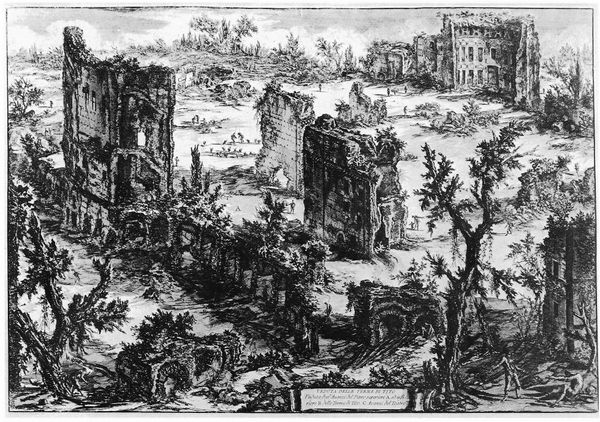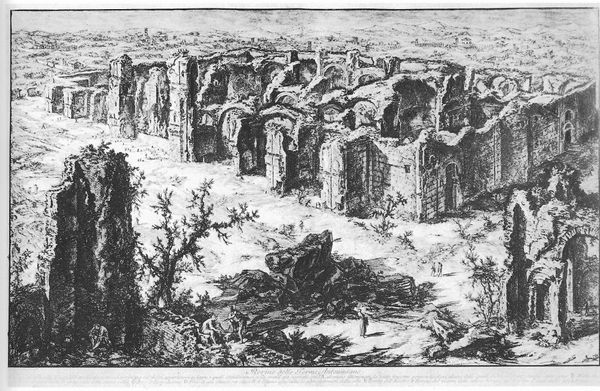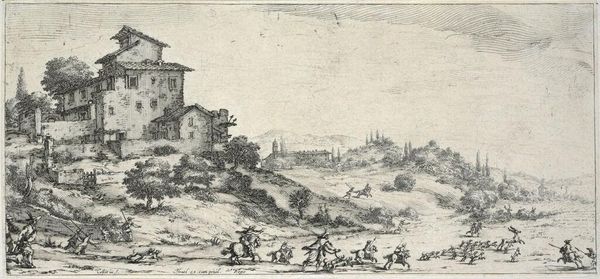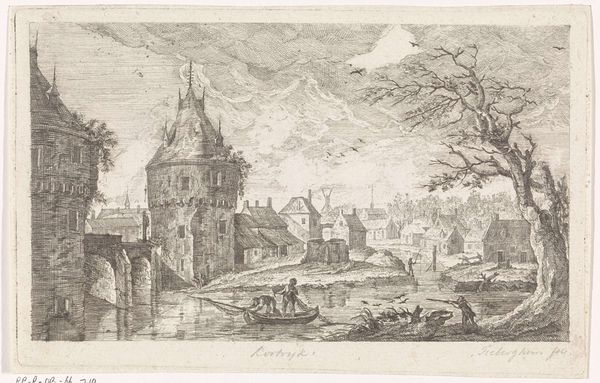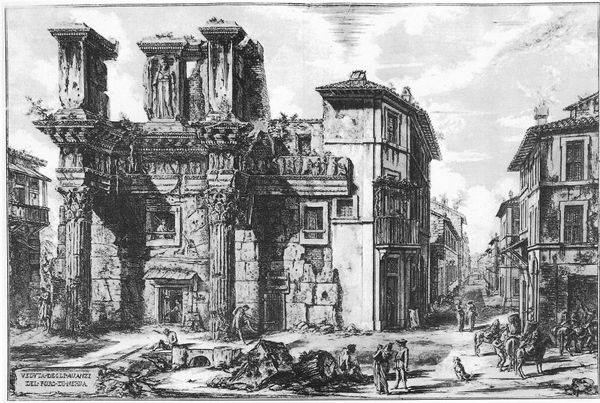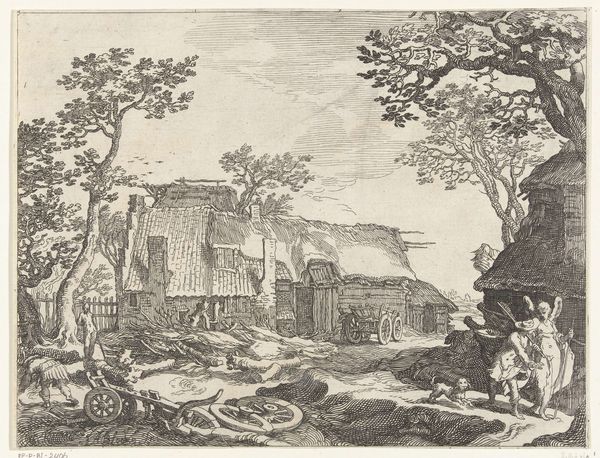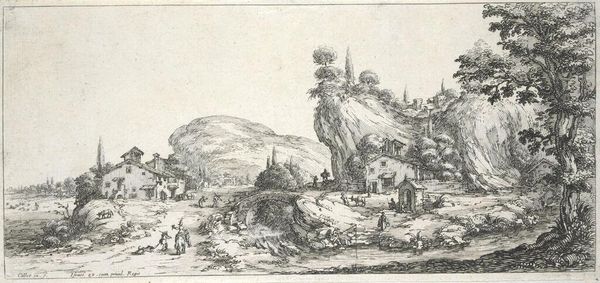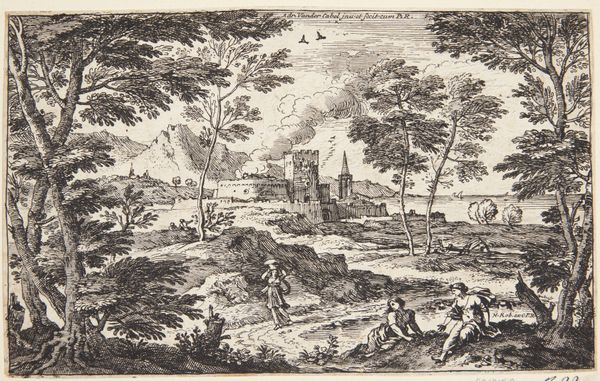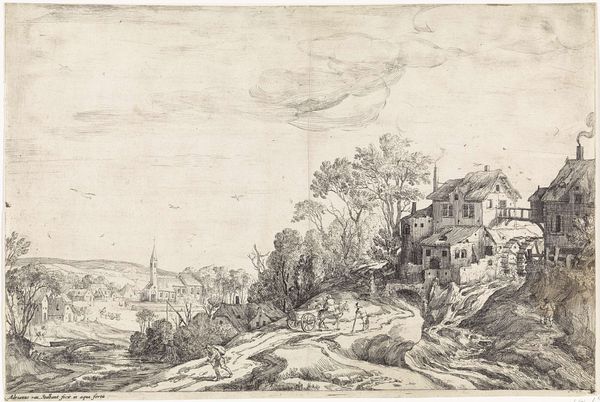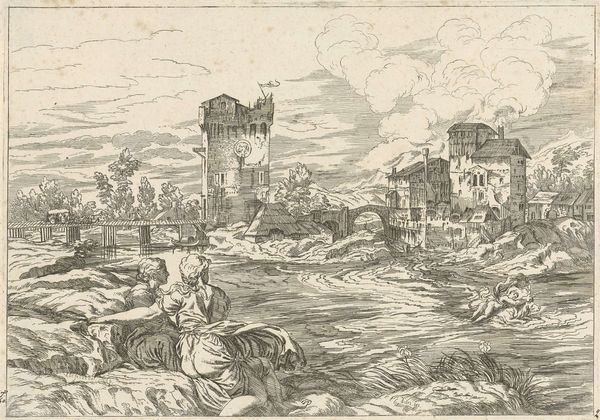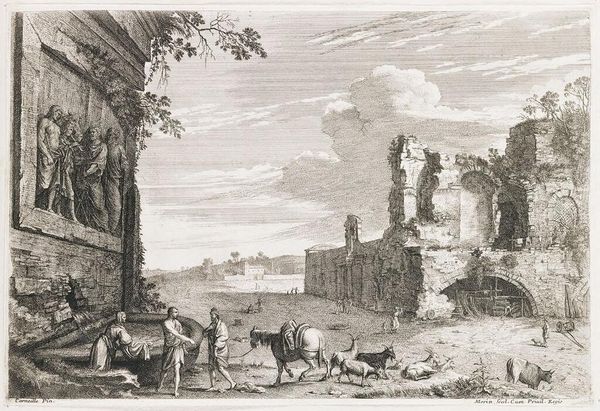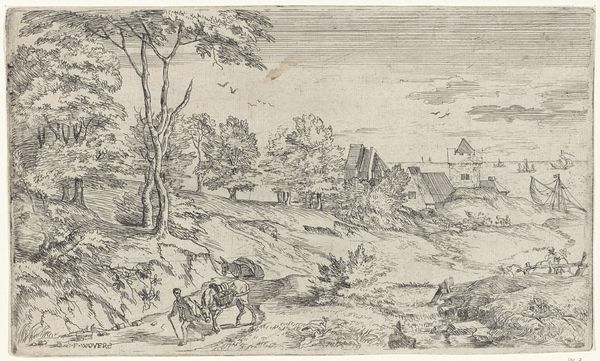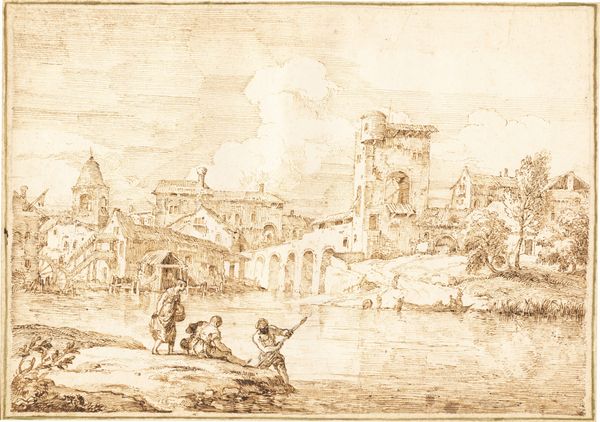
drawing, print, etching, paper, ink, engraving
#
drawing
#
neoclacissism
#
ink drawing
# print
#
pen sketch
#
etching
#
landscape
#
paper
#
ink
#
sketch
#
cityscape
#
history-painting
#
italian-renaissance
#
engraving
Copyright: Public domain
Editor: This is a print called "Vedute di Roma" by Giovanni Battista Piranesi. The medium looks like etching or engraving on paper. The scene depicts a bustling cityscape with ancient ruins. What strikes me most is the contrast between the detailed architecture and the everyday activities of the people. How do you interpret this work? Curator: This print, likely an etching, speaks volumes about cultural memory and the layering of history. What do you notice about the relationship between the figures and the architecture? Editor: The figures seem small compared to the grand buildings. It makes me think about the scale of history and how people exist within these monumental spaces. Curator: Exactly. Piranesi wasn't simply documenting what he saw. He was presenting a vision, laden with symbolism. The ruins themselves—the remnants of the Roman Empire—become symbols of the passage of time, the rise and fall of civilizations. Notice the use of light and shadow; how does that contribute to the feeling? Editor: The deep shadows definitely add to the drama. It feels both awe-inspiring and a little melancholic. As if to suggest things of the past can not be returned to their former glory. Curator: Indeed. The strong contrasts emphasize the power of the past but also hints at decay. Think of the Roman ideal, then consider the state presented in Piranesi's work. What emotions surface? He is less about perfect neoclassicism, more about the visual impact of time’s relentless march, creating something like a theatre set filled with collective meanings and sensations. This theatrical element links back to concepts and events held in cultural memory, constantly reinterpreting and reinventing themself. Editor: So, the ruins aren't just historical artifacts; they're symbols that carry emotional and cultural weight? Curator: Precisely! They become metaphors for the fleeting nature of human achievement. Consider then that Piranesi, in visually preserving Rome's antiquities, secures himself in a larger history that supersedes an individual's memory, while reinforcing a cultural lineage for generations to come. Editor: I never thought about it that way before. It is amazing how much history can be embedded in a single image. Curator: Prints such as these reveal a visual shorthand of symbolic references, a cultural inheritance of great beauty and lasting intrigue.
Comments
No comments
Be the first to comment and join the conversation on the ultimate creative platform.

